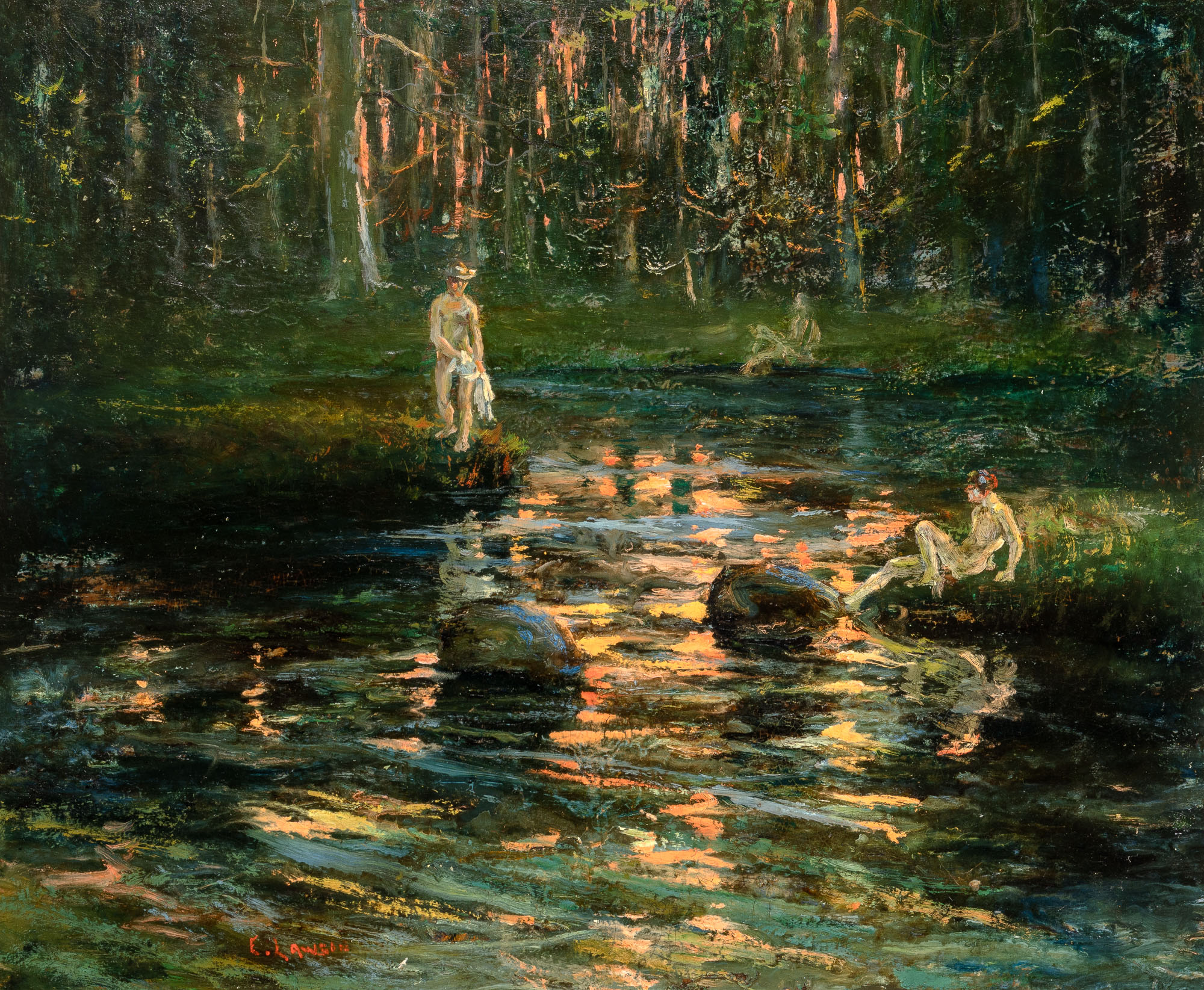
Ernest Lawson
American, 1873-1939
Ernest Lawson was a Canadian-born American painter recognized for his contributions to early 20th-century art in the United States. Trained in Kansas City, at the Art Students League in New York, and at the Académie Julian in Paris, he combined the color of Impressionism with a structural approach rooted in realism. His Paris years exposed him to the work of Monet and Pissarro, but he remained committed to a more grounded, tactile sense of place, even as his palette grew increasingly vibrant.
Lawson became closely associated with The Eight and the Ashcan School, exhibiting in their landmark 1908 show. Though not as overtly urban or confrontational as some of his peers, he shared their commitment to depicting everyday American life with sincerity. His favored subjects included the rivers, bridges, and shifting landscapes of New York, which he rendered with vibrant brushwork and a keen sensitivity to atmosphere. His works reveal a balance of intimacy and monumentality, simultaneously capturing natural settings and the energy of a rapidly modernizing city.
Celebrated in his lifetime with awards from the National Academy of Design and the Panama-Pacific International Exposition, Lawson remains an important figure whose work bridges Impressionism and American modernism. Today, his paintings are held in the collections of major institutions including the Metropolitan Museum of Art and the Smithsonian American Art Museum, and continue to attract strong interest from collectors and museums alike.





